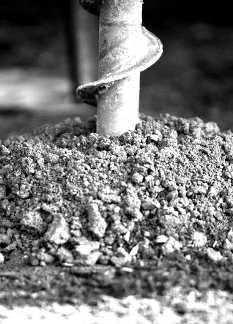Tiny fine from nasty leak, but Santos says all is well
 Gas firm Santos Ltd has been fined after groundwater sampling revealed elevated levels of naturally occurring elements including arsenic, lead, and uranium at a site in New South Wales.
Gas firm Santos Ltd has been fined after groundwater sampling revealed elevated levels of naturally occurring elements including arsenic, lead, and uranium at a site in New South Wales.
The Environment Protection Authority (EPA) fined Santos $1,500 for the pollution incident dating back to early 2013, which was caused by leaks from Pond 3 at the Bibblewindi Water Treatment Plant in the Pilliga region.
The company has confirmed that some concentration levels are above the recommended limit for drinking water, but says all are below the Australian water quality guidelines for fresh water ecosystems (ANZECC).
All of the identified conaminants were naturally occurring elements.
Environmentalists say the $1,500 fine is insignificant compared to the potentially ongoing damages, and to the profits of the company responsible.
Santos hydro-geologist Glenn Toogood has told the ABC that the area of the leak is not an aquifer, he says it is a ‘shallow perched layer’, but concedes that the NSW government considers it an aquifer.
“An aquifer in this particular area is something that could sustain a domestic or an irrigation use,” said Mr Toogood.
“If you tried to take water out of this shallow perch layer it would dry up very quickly.”
“We've had long consultations with the EPA over this. It's a terminology that the EPA has decided to use.
“The NSW aquifer interference policy has clear guidance on what an aquifer is,” he said.
The EPA has reportedly told Santos to set up an effective groundwater remediation and monitoring plan.
Mr Toogood says while the new containing facility is being constructed, polluted water is being pumped back into the leaking pond.
“The water is recirculated back into the pond itself, and that's where we're currently disposing that water to.
“It's very small volumes of water, we're likely to be getting 5-10 litres every couple of days out of that well.
“Currently that's our best strategy to maintain that water, is to relocate it back in the pond.”
Senior lecturer in environmental engineering, Dr Gavin Mudd from Monash University, says the company’s plan is good, as long as they sort out a permanent fix in very short time.
“You've got to also look at that in context. What's the option? Letting it go down a stream, letting it contaminate the aquifer worse?
“At the moment, if they're containing it til they can get better systems in place, better infrastructure, so they can properly clean it up, then sure, that might be okay in the very very short term, but I do stress short term. It is not a long term solution,” Dr Mudd said.
“I think the fines need to be larger in order to make sure that industry has incentive to do the right thing, because historically we're dealing with a situation where that wasn't the case.
“I'll give Santos credit here; they are actually spending a lot of money to re-engineer the whole site up there, but historically that wasn't the case.”








 Print
Print